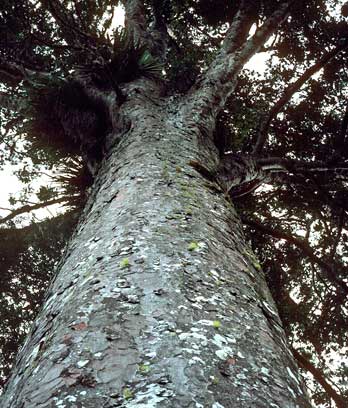Story summary
When the ancestors of Māori arrived in New Zealand, they found it was very different from their homeland in Polynesia. It was bigger and colder, and they needed to learn about the forests, which provided them with food, shelter and resources.
Tāne, god of the forest
Because the forest was vital for life, Tāne, the god of the forest, became very important in tribal traditions.
Creation story
In the Māori creation story, Tāne separated his parents, Papatūānuku (earth) and Ranginui (sky), letting light into the world. Trees in the forest are believed to hold apart the earth and sky, so light can come in.
Marae rituals
On the marae, the pōwhiri (welcome ritual) is based on the Māori creation story. The meeting house represents light, and the ground in front of it represents darkness. A speaker on the marae is seen as being like Tāne, bringing light to an issue.
Symbols in the forest
Māori saw plants and trees as being rich in meaning.
- The tī kōuka (cabbage tree) often grows alone, so it is a symbol of independence.
- Harakeke (flax) represents a family – the outside leaves include the parents, and the new leaf in the middle is the child.
- The raukawa plant is a symbol of romance. Long ago, it was used to make perfume for Māhinaarangi, an East Coast ancestor, when she met her lover Tūrongo.
- Perfumed plants were often worn around people’s necks. Mothers sang a ditty to their children, comparing them to a neck-satchel of scented moss and ferns.
Sayings from the forest
Many sayings compared people to plants and trees.
- The tōtara is a large, strong tree. When important leaders died, they were likened to great tōtara that had fallen.
- The ongaonga is a tree nettle that can sting people. A difficult person was compared to this plant.
- The tawa has a soft berry, but a hard kernel. A cowardly person was likened to the berry, but a brave person was compared to the kernel.





